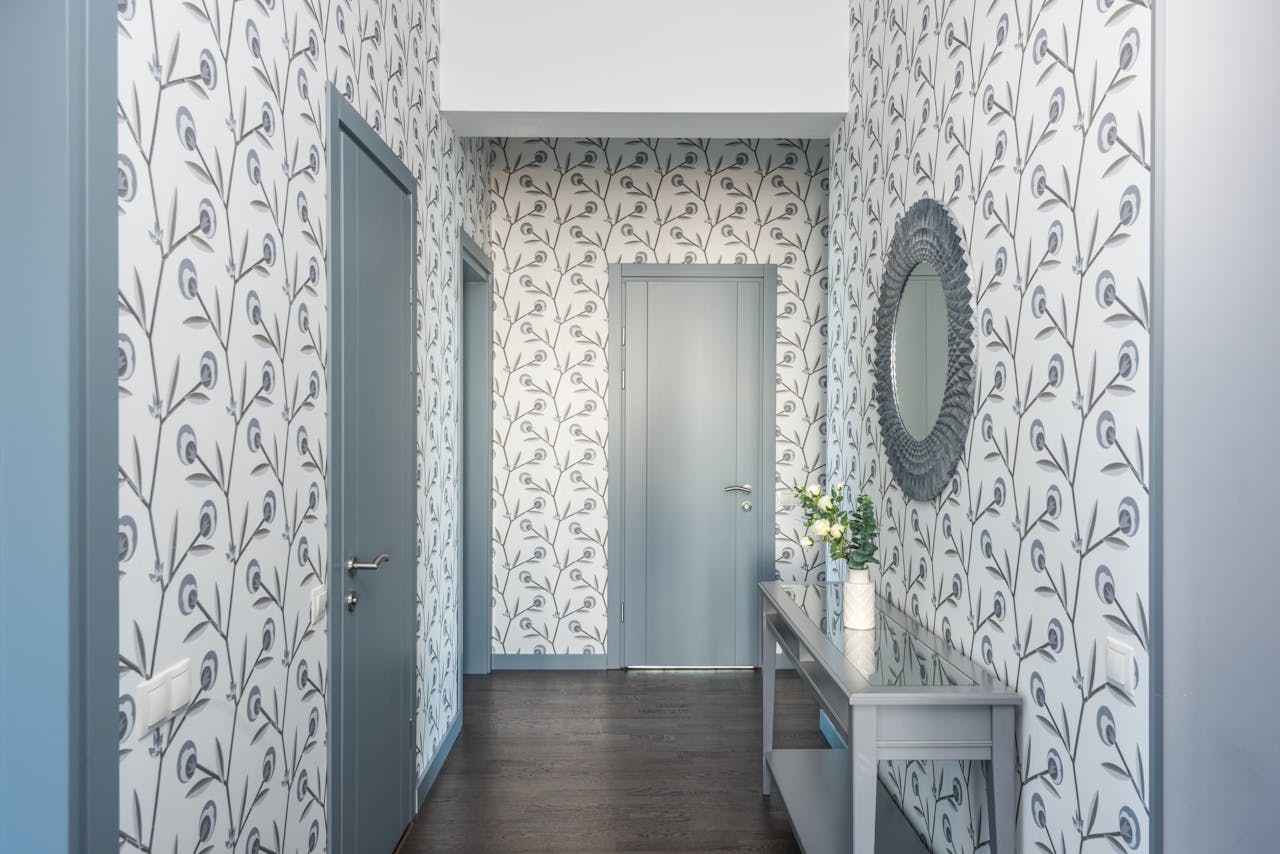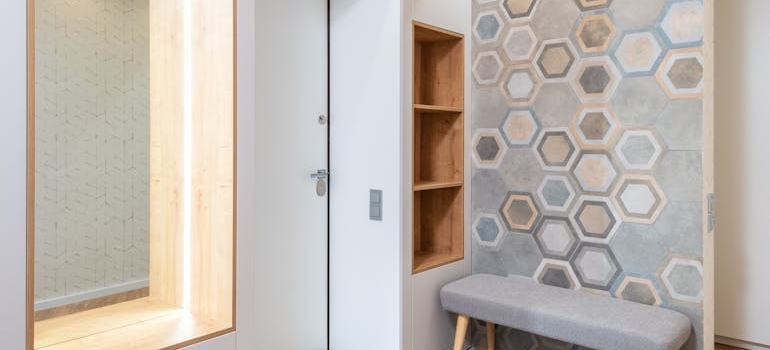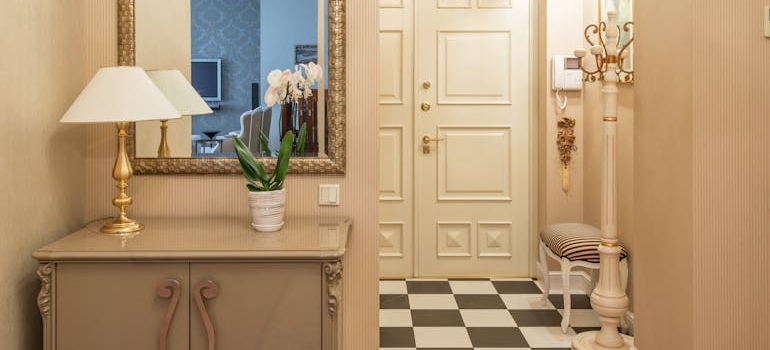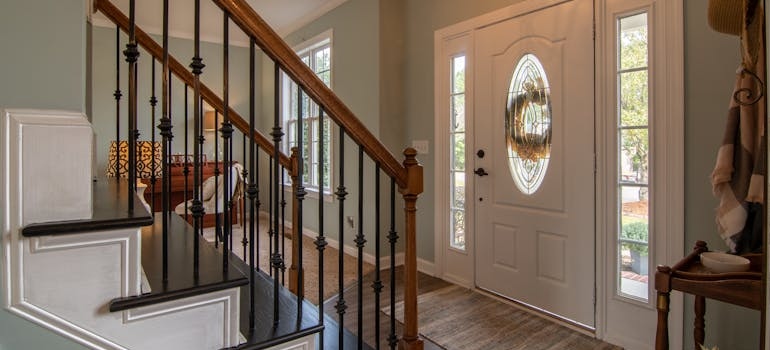
How to Create a Welcoming and Functional Entryway After the Move
Get an Instant Online Quote
"*" indicates required fields
Unpacking the last box might feel like the end of your move—but it’s just the beginning of making your new space feel like home. One of the first areas you and your guests will experience is the entryway. This small but mighty space sets the tone for the rest of your home. So how do you create a welcoming and functional entryway after the move? With a bit of creativity and strategy, your entryway can become both a stylish welcome mat and an efficient drop zone. So, let our affordable movers Atlanta GA help you prepare for the move before creating a functional yet welcoming entryway.
Your Entryway is Your First Step Into a Welcoming Home
You know that feeling when you enter someone’s home and you immediately feel good? You want such a feeling at your place, too. This area should gently transition you from the outside world into the peace of your home. It should feel like a deep breath, the kind that instantly grounds you. A well-designed entryway welcomes not just your body, but your energy, too.

Entryway Essentials
To create a welcoming and functional entryway, start with soothing wall colors—soft beige, warm white, or light green—to invite calm energy. A mirror, placed thoughtfully (but not facing the door), reflects light and amplifies positive vibes. A wooden console holds essentials while grounding the space. Add a coat rack and an elegant umbrella stand to encourage order. A small pouf or stool offers comfort while taking off shoes. Most importantly, include a personal, family-centered detail—a framed photo, heirloom, or symbol that reflects love and belonging. However, to move these in securely, you’ll need the help of professional movers, such as movers in Marietta GA, if you are moving within Georgia.
Mirrors Are an Inevitable Entryway Detail
Mirrors play a powerful role in shaping the mood and energy of your entryway. Horizontally aligned mirrors placed above a console table add a sense of width and depth to the space, making even the smallest entry feel more open. Vertical mirrors, on the other hand, are perfect for last-minute outfit checks before heading out the door. For those looking to add character, mirrors with unique shapes—such as round, oval, or asymmetrical—introduce personality and artistic flair.
Additionally, frame-window-style mirrors mimic natural light and create the illusion of extra architectural interest, which is especially useful in darker or enclosed entryways. You can also choose mirrors with ornate frames or decorative elements like metallic finishes or carved wood to bring warmth and texture. Altogether, these styles not only reflect light but also reflect your taste, turning a functional object into a design feature that enhances the entire space. However, mirrors are critical for moving. So hire professional movers for relocating fragile items.
Create a Welcoming and Functional Entryway With Furniture
Functional furniture will make your entryway complete. Relocate furniture such as:
- Console table
- Storage bench
- Coat rack or wall hooks
- Shoe cabinet or rack
- Small pouf or entryway stool
If you have a long hallway, consider a built-in closet to create a welcoming and functional entryway.

Types Of Entryways and Their Challenges
Now that you know the entryway essentials, let’s discuss the types of entryways and their challenges:
- Long Hallways: These can feel cold or tunnel-like, so the challenge is making them feel warm and inviting without cluttering the space.
- Stairs Immediately at the Entrance: This layout can feel abrupt or overwhelming, making it tricky to create a grounded transition zone.
- Corner Entryway: These often lack definition, so it’s important to clearly mark the entry area with rugs, lighting, or furniture.
- Open-Concept Entryway: Without walls or boundaries, it can be difficult to visually separate the entry from the living space.
- Narrow or Small Entryway: Space is limited, so the challenge is balancing function and style without overcrowding.
- Split-Level Entryway: With steps going up and down, safety and flow become priorities, along with visual cohesion.
How to Create Them to Be Both Welcoming and Functional
For long hallways, use a runner rug to soften the length, add wall-mounted lighting for warmth, and include slim furniture like a narrow console or wall shelf to keep things practical without narrowing the walkway. If stairs are immediately in view upon entering, anchor the space with a bench or small rug to establish a sense of arrival. A mirror or artwork on the adjacent wall can shift the focus from the stairs.
In corner entryways, define the area using a circular rug, a tall plant, or vertical hooks to guide the eye and functionally organize the spot. Open-concept entryways benefit from zoning—use furniture placement, lighting, and textures like rugs to subtly divide the space. For small or narrow entryways, prioritize multi-functional pieces: a wall-mounted coat rack, a floating shelf with key tray, or a bench with hidden storage.
In split-level layouts, safety is key—add non-slip rugs, handrails, and good lighting. Regardless of layout, a welcoming entryway should reflect warmth and personality, so incorporate personal touches like family photos, a calming scent, or a handwritten welcome sign to make everyone feel instantly at home.

Create a Welcoming and Functional Entryway Immediately After the Move
To create a welcoming and functional entryway immediately after the move is your first chance to turn chaos into calm. Think beyond the clutter—roll out a bold rug to define the zone and invite fresh energy. Stack moving boxes into a temporary console table, topped with a lamp and diffuser to add instant warmth. Use removable wall hooks for coats and keys if your toolbox is still missing. Add a vertical mirror to reflect light and create a sense of space. A cozy stool and a framed family photo can ground the area emotionally. Even half-settled, your home can feel intentional from the very first step. And don’t forget to hire moving labor for your entryway furniture.